Chobe National Park Travel and Vacations
Chobe is the second-largest conservation area in Botswana. It is home to the largest elephant population of any national park in Africa and is an ideal safari destination to combine with a visit to Victoria Falls for a comprehensive vacation experience.
Need Advice?- Home
- >>
- African Travel
- >>
- Botswana
- >>
- Chobe National Park
Popular Areas in and Around the Park
Unforgettable, wild, and exhilarating are the most appropriate words to describe a visit to Chobe. It is conveniently located close to Victoria Falls for an ideal combination safari package.
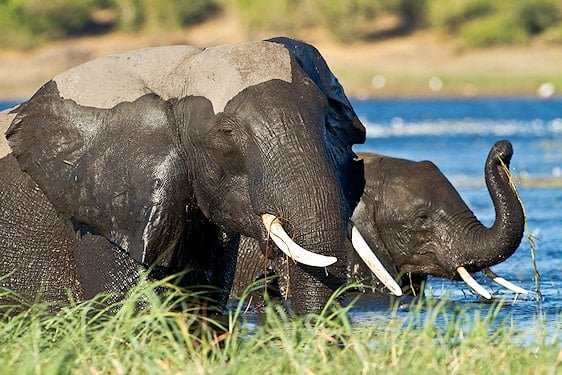
Northern Chobe Riverfront
The river and floodplain that form the border between Botswana and Namibia attract significant concentrations of animals during the dry season. The ancient trees on the riverbank offer shelter to many bird species. The marginal floodplain between Kasane and Serondela is covered in dense groves of fever berry and woolly caper bushes.
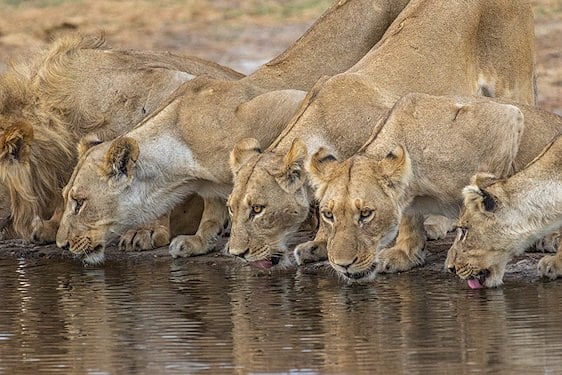
Savute
Savute is one of Africa's finest wilderness regions. The annual zebra migration passes through this area, allowing viewing thousands upon thousands of these animals and the lion prides that prey on them. The Savute Channel started flowing a few years ago after a dry spell of almost a quarter-century. It flows into the Savute marsh, providing a limitless water supply and rich pastures in this otherwise arid landscape.
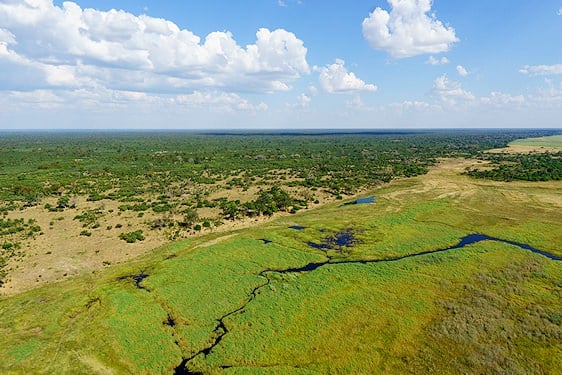
Linyanti Marsh
Linyanti lies in the furthest northwestern corner of the Chobe National Park. It resembles the Okavango Delta in many respects. It covers an area of roughly 900 square kilometers with reed-lined channels and islands with ancient trees and lagoons dotting the landscape. The region is a haven during the dry winter when animals are plentiful, and bird life is almost astounding.
Chobe National Park Vacation Options & Travel Tips
Chobe National Park is widely regarded as one of Africa’s premier safari destinations, owing to the dense gatherings of wildlife found along the majestic Chobe River.

Tours, Safaris & Honeymoons
Browse our thoughtfully crafted safari tours.

Tailor-Made Vacation Packages
All our tours and safaris can be customized.

Travel Tips & Advice
Important information about visiting Southern Africa.
Recommended Safari Lodges
Chobe is home to traditional lodges easily accessible from Kasane and Victoria Falls and remote safari camps only reachable by light charter flight.
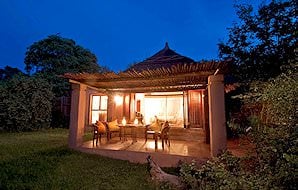
Chobe Chilwero
Chobe Chilwero is a fine luxury lodge on a hill overlooking the Chobe River floodplain. It offers both land and water-based game viewing.
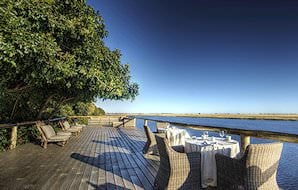
Chobe Game Lodge
Chobe Game Lodge is a reasonably large hotel-like luxury lodge with magnificent views of the Chobe River. It is famous for hosting one of the weddings of Elizabeth Taylor.
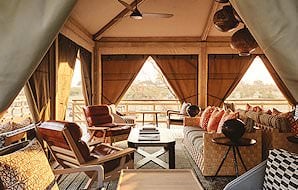
Savute Elephant Lodge
Savute Elephant Lodge offers luxury safari accommodation on the banks of the Savute channel in a remote area of the Chobe National Park.
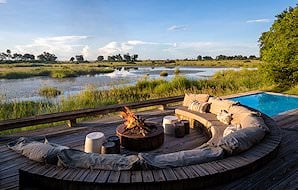
Kings Pool Camp
It is one of Botswana's most remote and intimate safari camps, built on the spot where a Scandinavian monarch once camped.
Chobe National Park Travel Overview
Chobe is located in the northeastern corner of Botswana. This national park offers safari enthusiasts the opportunity to experience the African wilderness and all its majesty from both land and water in an area where you can view various animal and bird species.
In addition to the large elephant population, Chobe is also known for vast herds of buffalo, large prides of lion, and the rare African wild dog. Antelope species to keep an eye out for are puku, lechwe, roan, and sable antelope. Rhino is the only member of Africa's Big Five not found in Chobe.
Sunsets & Silhouettes in Chobe Park
A giant red sun setting in Chobe Park is considered a notable safari experience for many reasons. Broad floodplains and open skies create dramatic, uninterrupted panoramas, with wildlife silhouetted against a fiery African sky.
The Chobe River provides its own scenes of beauty at dusk, as the rays of the sun transform the waters into golden and orange hues — the perfect setting for a boat cruise, where you might catch a crocodile slithering into the water, birds gliding over the river, and other surprising moments as animals gather at the banks to drink after a hot day.
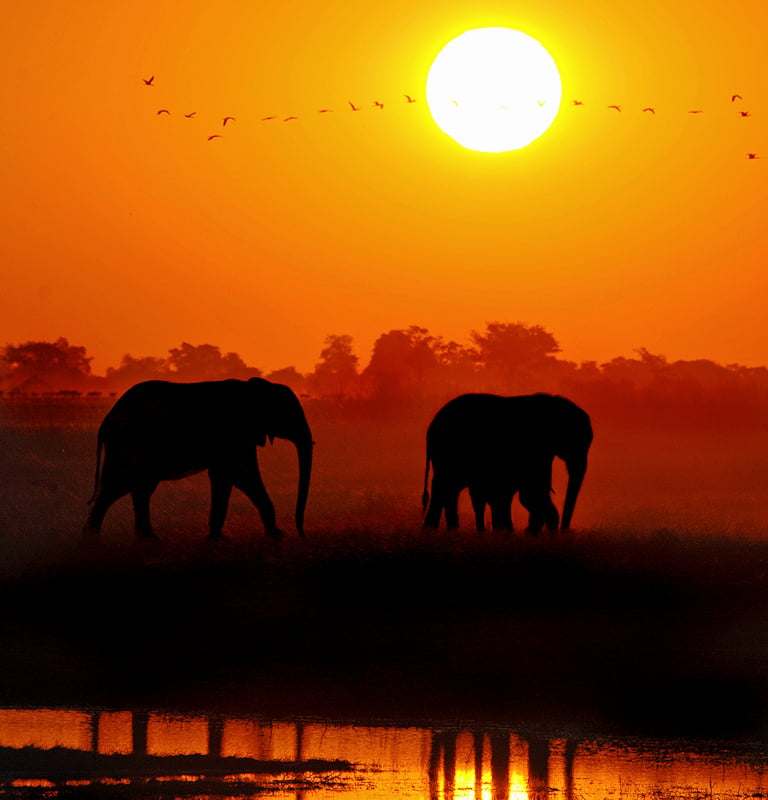
Foods to try when visiting Chobe National Park
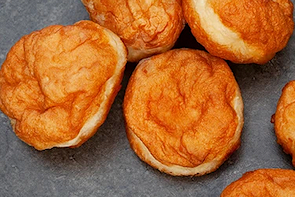
Vetkoek
Vetkoek is a type of deep-fried bread made of cake flour. It is a local favorite that can be eaten as is, filled with beef mince, or spread with butter and jams.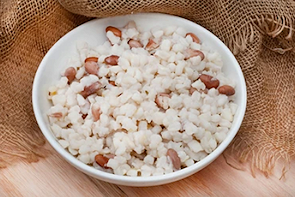
Samp
Samp consists of dried corn kernels crushed until broken but not fine. It is then cooked in salted water and served as a starch with fish or meat dishes.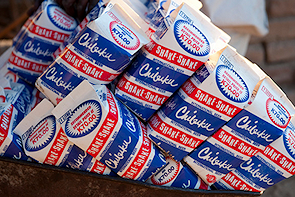
Chibuku
Chibuku is a sorghum beer brewed in Botswana - ingredients of this local favorite include sorghum, maize as well as millet. The alcohol content ranges between 0.5 and 4 percent.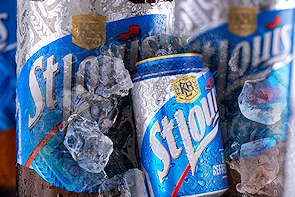
St Louis
St Louis Lager is Botswana's only locally produced lager beer. It has been in production for 50 years and is worth a try on a sunset cruise or one of those hot Chobe summer afternoons.FAQ
Useful Travel Info
By Air
Chobe National Park is accessible via Kasane Airport in Botswana, Livingstone Airport in Zambia, and Victoria Falls Airport in Zimbabwe. The latter two airports are a drive of about an hour and a half from the northern part of Chobe near the town of Kasane.
There are daily scheduled flights between Johannesburg in South Africa and all three of these airports. The duration of these flights is around one hour and forty minutes.
By Road
Traveling overland from South Africa to the Chobe National Park is recommended only for 4x4 enthusiasts. It can, however, be an unforgettable experience for those well-prepared.
The road journey would typically involve a night spent just before the South Africa/Botswana border, from where it is recommended to overnight near Nata on the second evening before reaching the town of Kasane - the gateway to Chobe - on the following day.
Chobe is best visited during the dry season from the beginning of May to late October. During this time, the concentration of animals around the Chobe River increases substantially, and game viewing is optimal.
The temperatures prevalent in the area are at their lowest during May, June, and July, with chilly evenings and very pleasant daytime temperatures. From August, the temperatures start rising, with days becoming hotter each consecutive month. With the onset of the rainy season in late October, the wildlife disperses to other areas where fresh grazing is available.
Rainfall continues throughout the hot summer months until about the end of April. During this period, the region is hot and humid. These months are, however, the best time for bird watching in Chobe.
The northern part of Botswana is a malaria area, and it would be prudent to discuss anti-malaria precautions with your physician. It is also advisable to pack sufficient allergy medication if you are prone to allergies related to dust, pollen, and grasses.
Botswana is a very safe country with a very low crime rate. Chobe is a vast wilderness with a low human population, where the prospect of petty crime is virtually non-existent. Once at one of the lodges in the region, you are in good hands, and you will be very well taken care of. Adhering to the rules and advice communicated by your ranger will ensure your safety while enjoying safari activities in the Chobe National Park.
Safari Activities
Several activities primarily focused on experiencing Chobe's wildlife and natural beauty is available to visitors. In addition to these nature-based activities, some cultural immersions are also on offer.
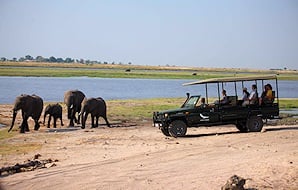
Open 4X4 game drives
These safaris are conducted in Chobe, interpretive, and accompanied by a local ranger and tracker. It is an ideal way of coming close to the animal and bird species inhabiting Chobe. Game drives are normally conducted during the early morning and the late afternoon. The duration of these excursions would typically be between three and three and a half hours.

Water-Based Game Viewing
The signature wildlife activity in this region involves game viewing from specially adapted small boats. It offers visitors a unique way of observing the wildlife along the river banks. These boat safaris are provided during the morning as well as in the late afternoon. The author believes that late afternoon boat cruises are best, for more animals come to the water's edge during this time. It also has the advantage of a unique vantage point as the sun sets over this remarkable wildlife haven.

Riverboat cruises
A few large riverboats offer cruises of varying lengths devoted to exploring the Chobe and Zambezi rivers. The confluence of these rivers is near the town of Kasane. The Zambezi Queen is recommended for those wishing to experience this part of Africa from a riverboat. Two daily game activities are conducted from the boat.
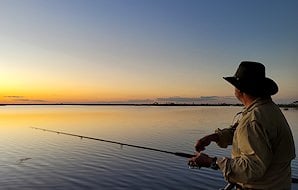
Fishing
Chobe has recently become a top-rated fishing destination, with 90 species of freshwater fish found in the vast river near the town of Kasane. But the tiger fish, Africa's greatest freshwater fighting fish, attracts more international anglers to the Chobe River than any other fishing pursuit.
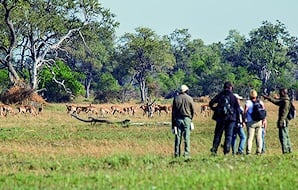
Bush Walks
Bush walks are conducted from almost all lodges in the area. These walks offer a unique way of viewing the wildlife in the region quietly and discreetly. The walks are accompanied by skilled rangers who are experts in interpreting animal behavior and ensuring the safety of safari enthusiasts near potentially dangerous animals.

Visits to the Victoria Falls
You can explore mighty Victoria Falls on a day trip from the northern part of Chobe. We recommend that all that visit the region dedicate a day to exploring one of the world's grandest natural wonders.
History
The first inhabitants of the area where Chobe National Park exists today were the Basarwa - descendants of the San Bushmen. You can still view their rock art on rocky hills scattered throughout the region.
During the 1930s, the British High Commissioner visited the Chobe River and recommended that the region become a wildlife conservancy, following the example of the Kruger National Park in South Africa. Subsequently, an area about a third of the park's current size was proclaimed a non-hunting area.
In 1960, the Chobe Game Reserve was created. It received official national park status in 1967. Several commercial ventures, primarily related to the timber industry, were still located inside Chobe. These were moved outside the park's boundaries by 1975. Chobe has since established itself as one of Africa's most prolific national parks dedicated to conserving vast herds of common mammals and several rare carnivores and antelope species.
Wildlife
Though not as diverse in species as the Kruger National Park, the herds encountered in Chobe are typically much larger. Elephants, especially, can be seen by the thousand throughout the region. These giant pachyderms substantially impact the environment and have thinned out the dense thickets along the banks of the Chobe River. Each fully grown animal requires roughly 150 kg of fodder daily.
Buffalo, wildebeest, and zebra can be seen in large numbers, also impala. Notable antelope species in Chobe include sable, roan, kudu, and waterbuck. The rare puku and Chobe bushbuck can be seen nowhere else in Botswana. The small oribi and Sharpe's grysbok are other species rarely seen in the other national parks of Southern Africa.
Predators in the park include lions, leopards, and African wild dogs. Cheetahs are often spotted on the park's open landscapes, where their speed can be utilized to full advantage when hunting. Smaller cat species like serval and caracal, though not regularly spotted, maintain healthy populations in the Chobe National Park.










